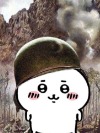Vocabulary_animación
|
|
Título del Test: Vocabulary_animación Descripción: Vocabulario de terminos de animación para nivel 7mo |



| Comentarios |
|---|
NO HAY REGISTROS |
|
Mesh. A collection of vertices, edges, and faces forming a 3D object. Technique for projecting 2D textures onto 3D models. Topology. Renderin technique for fog, smoke, and clouds. The flow and structure of polygons in a mesh. UV Mapping. Technique for projecting 2D textures onto 3D models. A program that defines surface appearance. Subdivision Surface. A method to smooth geometry by increasing polygon count. Technique for projecting 2D textures onto 3D models. Retopology. Rebuilding mesh topology for better animation or performance. Simulates indirect light bouncing between surfaces. Keyframe. Animation method where end positions determine joint movement. A frame that marks the start or end of a motion. Timeline. A visual layout of animation over time. The flow and structure of polygons in a mesh. Rig. Simulation of liquids and gases. A skeleton or control system for animating a model. IK (Inverse Kinematics). Animation method where end positions determine joint movement. Matching digital elements to live-action footage. FK (Forward Kinematics). Matching digital elements to live-action footage. Animation method where each joint is rotated manually. Shape Key. A stored mesh deformation used for facial expressions or lip sync. Animation method where each joint is rotated manually. Lip Sync. Matching mouth shapes to spoken audio. A method to smooth geometry by increasing polygon count. Shader. A program that defines surface appearance. A network of computers used to process rendering tasks. Ray Tracing. Painted backgrounds used in visual effects. Technique for realistic lighting and reflections. Ambient occlusion. Simulation of liquids and gases. Simulates soft shadows in corners and creases. Global Illumination. Simulates indirect light bouncing between surfaces. Identifies when objects intersect or touch. Render Pass. Simulates indirect light bouncing between surfaces. A layer of visual data (e.g., shadows, reflections) rendered separately. Render Farm. A network of computers used to process rendering tasks. Grayscale image representing distance from camera. Particle System. Used to simulate effects like smoke, fire, or rain. Rough version of a scene used for planning. Cloth Simulation. A skeleton or control system for animating a model. Physics-based animation of fabric behavior. Fluid Dynamics. Simulation of liquids and gases. A layer of visual data (e.g., shadows, reflections) rendered separately. Volumetrics. Simulates indirect light bouncing between surfaces. Rendering technique for fog, smoke, and clouds. Collision Detection. Identifies when objects intersect or touch. The flow and structure of polygons in a mesh. Rotoscoping. Manually tracing over footage to isolate elements. A program that defines surface appearance. Matte Painting. Matching mouth shapes to spoken audio. Painted backgrounds used in visual effects. Tracking. Matching digital elements to live-action footage. Identifies when objects intersect or touch. Depth Map. Rebuilding mesh topology for better animation or performance. Grayscale image representing distance from camera. Color Grading. Adjusting color and tone for mood and consistency. Technique for realistic lighting and reflections. Previsualization. Adjusting color and tone for mood and consistency. Rough version of a scene used for planning. |





